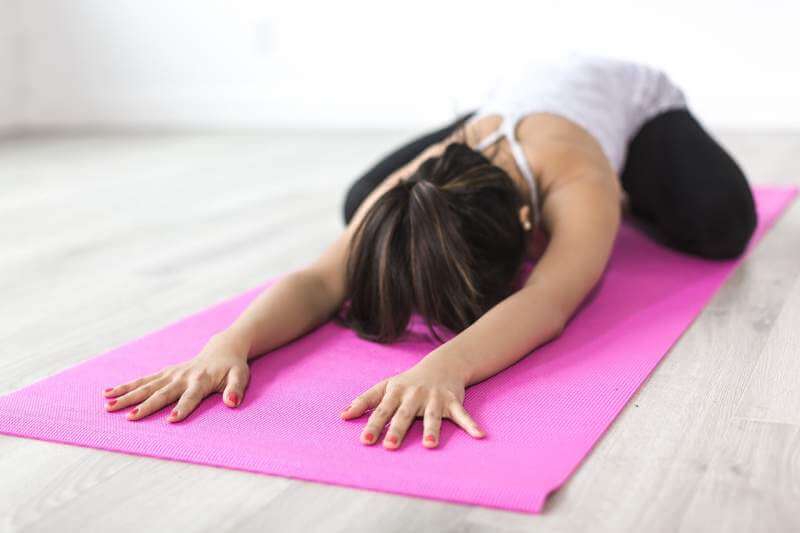Ever picked something off the floor, and when you got back up, your back hurt so bad?
If yes, you need to work on your flexibility!
Flexibility describes the capacity of your joints and surrounding muscles to move through a specific range of motion with relief and without discomfort.
Improving your flexibility is vital, as it will help prevent muscle strain and joint distress. It also promotes ease in movement.
While brisk exercises improve your endurance or strength, stretching can improve your flexibility.
There are numerous kinds of exercises to incorporate into your daily routine, which will undoubtedly help you build your flexibility. Some of them have been listed below, but for more information on how to keep yourself healthy, be sure to check out Body tonic Clinic.
Read on for our guide!

Stretching exercises to try
For many of us, stretching is honestly, quite boring. Still, you can benefit from committing a few minutes towards getting a good stretch every day. This will promote relaxation and help you sleep better.
Here are some stretching exercises to try!
Baby pose
This stretch targets the back, hips, thighs and ankles. It is one of the stretches you can hold for an extended period.
To do this, kneel on the floor, putting your toes together, spread your knees slightly apart and rest your buttocks on your heels, bend towards your knees with your arms extended forward.
Hold in that position for up to a minute, breathing softly.
Integrating this into your exercise routine will create a sense of serenity.
Research also shows that it is excellent for digestion!
Cobra stretch
This pose tones your body and spinal nerves, thereby creating more room for flexibility.
In attempting this pose, lie down on your belly with your head faced down, stretching your legs backwards, then lift your upper body off the floor using your arms. Arch your neck slightly back and lookup. That’s it!
Hold this pose for 2 minutes, ensuring your elbows are straightened to the max.
Seated spinal twist
This one is great for releasing stiffness and regaining energy. It also increases flexibility throughout the spine.
To do this, sit down on the floor, extending both legs in front of you, bend your left knee towards you and put your right elbow on it. Your left hand should be on the floor behind your back and twist your midriff (right side) as if you’re trying to look backwards.
Hold this pose for one minute and switch sides after that.
Forward fold
This is also known as the ‘intense stretch pose’.
This stretches the entire backside of your body, stretching your hamstrings (posterior thigh muscles) and calves while also relieving tension in your neck and shoulders.
To perform this stretch, stand straight with your feet hip-width apart. Bend forward till your head releases down, maintaining a flatness in your back and stretching your fingertips to the floor.
Frog pose
As funny as this sounds, it’s one of the most effective exercises to stretch the inner thighs.
It is similar to the baby pose but with the knees wider apart, keeping them on the ground, raising your bum and keeping your arms on the floor as far out as possible.
By making the space between your knees wider, you feel the inner thigh stretch more.
This pose is also proven to relieve menstrual cramps.
More tips!
- Warm-up: Make sure you warm up by engaging in aerobic exercises, and start sweating before jumping in. Sweating allows you to go deeper into your stretches. The deeper you go in your stretches in every session, the faster your flexibility progresses.
- Listen to your body:Understand your body and the types of exercises you need to do. Know the stretches that will work best for your body structure. Don’t push too hard.
- Consistency is key: Do not mind all those ads you see around saying ‘how to become flexible in a day’.
Rome wasn’t built in a day.
Stay consistent! 20 minutes 4-5 times a week rather than 1 hour in two weeks can make a difference.
In Conclusion
These stretch exercises add variety to your flexibility practice. They can be a great way to remain balanced in your everyday life.
Stretching, especially when paired with deep breathing, helps your joints move to their fullest potential and strengthen your muscles.
Flexibility training can help to improve blood flow and circulation, which allows oxygen and nutrient-rich blood to flow effortlessly throughout the body.
These are just a few of the tips and benefits of being flexible. Try out a few of these exercises for each day’s exercise session, and you would be flexible soon enough!
